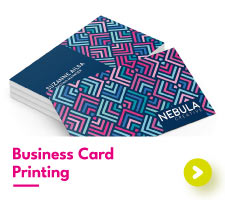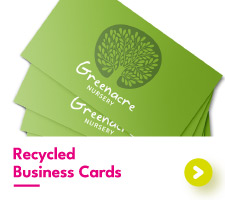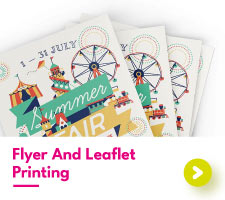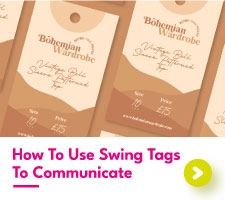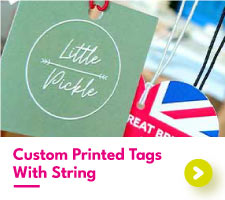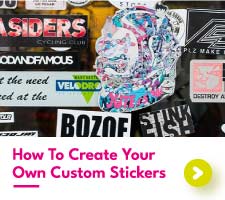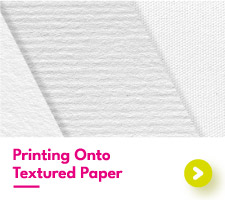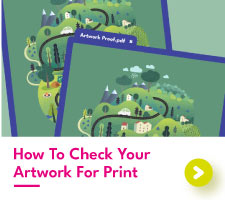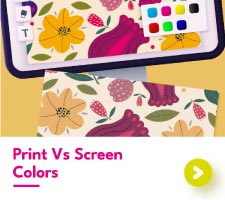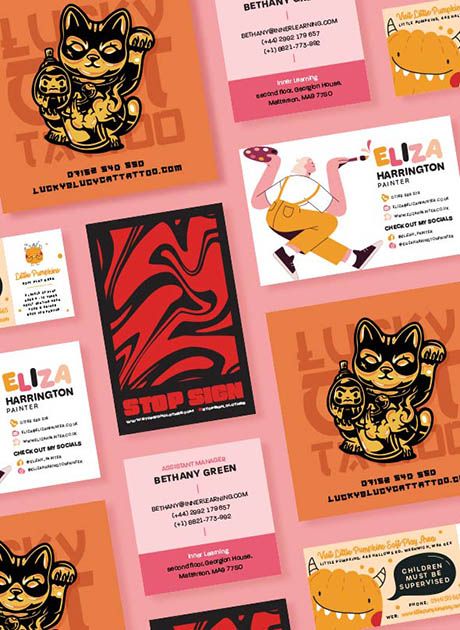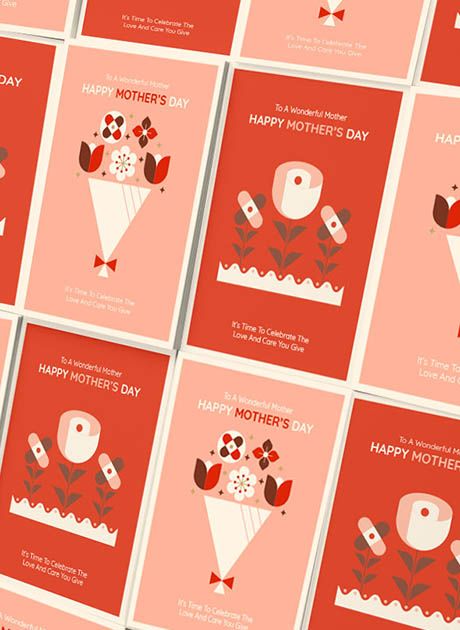How To Start Your Own Greeting Card Business
Looking for a creative side hustle that lets you turn your artistic passion into profit? Starting your own greeting card business could be the perfect fit. Whether you’re a graphic designer, illustrator, photographer, or crafting fanatic, this is a flexible and fun way to channel your creativity while building a business in the process.
The greeting card industry isn’t just staying afloat, it’s continually growing while providing a welcoming base for industry up-and-comers, with plenty of room for fresh ideas and unique designs that stand out amongst the Hallmark veterans. Best of all, starting a greeting card business doesn’t have to require a huge investment. With a strong concept, some thoughtful planning, and quality printing (we’re here for that part), you can design and sell custom greeting cards that people will love to exchange.
In this blog, we’ll take you through five straightforward steps to get started: from choosing your niche and finding your place in the industry to designing your cards, printing, packaging, and even marketing them. By the end, you’ll have everything you need to kick off your greeting card side hustle and maybe even take on the industry titans.
Ready to dive in? Let’s get started!
Step 1: Find Your Focus
Before you dive into designing and printing greeting cards to sell, you need to figure out what makes your cards different. The greeting card industry is bustling with creativity, which is great news for creatives stepping up with unique ideas! But to stand out, you’ll need to carve out a niche that reflects your style, audience, and goals.
Here’s how to get started:
Define Your Target Audience
Who are you creating greeting cards for? Think about the type of person who will buy your cards. Are they sending them to celebrate milestones, share laughs, or express heartfelt messages and emotions? Your audience will influence everything from your designs to how you market your cards. For example:
- Young professionals might love edgy, funny, minimalist, or even pop-culture-inspired greeting cards.
- Families and sentimental types might prefer warm, heartfelt messages crafted to strike a more emotional cord.
Decide Your Style
When you design your own greeting card, what feels natural? Maybe you’re an illustrator, a photographer, or a mixed-media artist. Perhaps you’ve got a talent for bold typography or intricate patterns. Whatever your strength, lean into it! This is your chance to become a master in your chosen style.
Are you tired of sappy cards? Go bold and create laugh-out-loud designs. Prefer elegant and timeless greeting cards? Focus on creating beautiful, sentimental pieces that you simply wouldn’t find in a high-street card store. The key here is consistency – your niche quickly becomes your signature style, so what do you want it to be?
Consider Your Market
It’s not just about what YOU love; if you want your cards to fly off the shelf, it’s about what people are looking for. Spend some time researching trends and gaps in the current market:
- Are there certain types of cards that you feel are underrepresented?
- Is there a demand for eco-friendly or handmade designs that isn’t being tapped?
- What’s working for your future competitors, and how can you do it better than them?
Dedicating your time to this step will also help you really think about how you want to sell your cards. Are you aiming for an online-only marketplace like Etsy? Or do you want to explore selling in-store with local retailers and indie boutiques? The answers to these questions will help guide your decisions when it comes to design, production, and pricing.
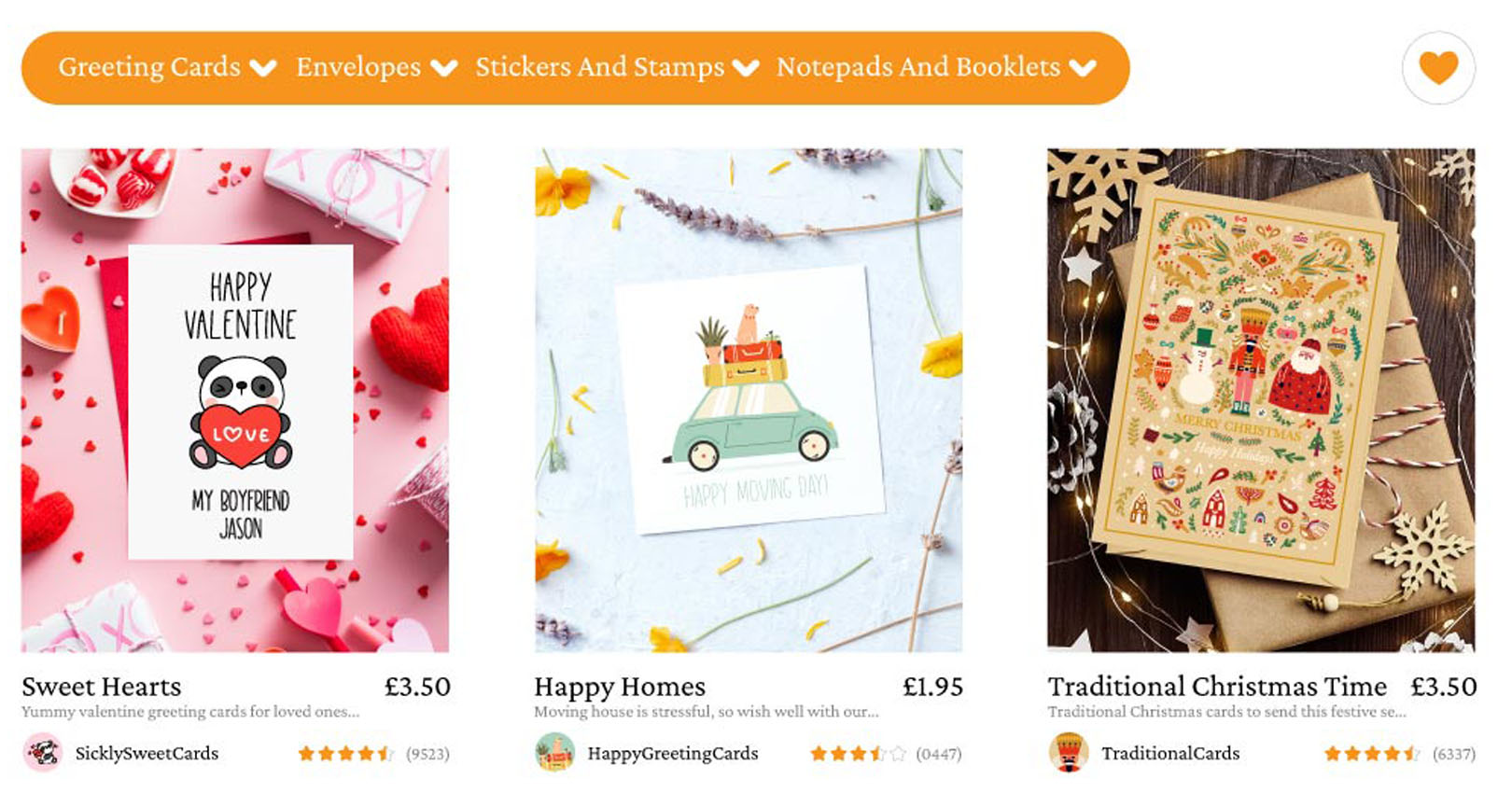

Stick to Your Path
Once you’ve chosen your niche, commit to it. It’s tempting to try to create something for everyone, but starting small and focused is the best way to build a loyal customer base. Over time, you can branch out, but honing your craft now will make printing greeting cards to sell far more effective and rewarding in the long term.
Finding your focus sets the foundation for the rest of your business journey. By identifying your target audience, defining your style, and understanding your market, you’ll position yourself for easy success. Now that your niche is locked in, it’s time to dive into the next step – plan, plan, plan!
Step 2: Research and Planning
Before you dive headfirst into designing and selling greeting cards, it’s essential to have a solid plan in place. Research and planning will help you lay the groundwork for a business that not only launches successfully but also grows sustainably and organically. Whether this is a side hustle or a venture you hope to grow into a full-time gig, careful preparation will help you avoid common pitfalls and maximize your chances of success.
Here’s how to approach this critical step:
Study Your Competition
The greeting card market is undeniably crowded, but that doesn’t mean there’s no room for your ideas. To carve out your space, start by studying the competition.
- Identify successful card businesses: What makes them stand out? Are they known for witty humour, elegant designs, or an eco-friendly ethos? Look for patterns in what works well.
- Spot gaps in the market: Are there niches that feel underrepresented? Maybe there’s demand for inclusive designs or modern, minimalist cards that you could fill.
- Learn from others’ mistakes: Reading reviews or analyzing struggling businesses can teach you what not to do, whether it’s unreliable shipping, poor print quality, or designs that fail to resonate with customers.
Write a Clear and Concise Business Plan
A business plan doesn’t have to be intimidating – it’s simply your roadmap to success (we know you’ve got it in you!). Start with the basics and refine it as your ideas start to take shape:


1. Set Objectives: What do you hope to achieve? Whether it’s earning extra cash as a wedding-funding side hustle or eventually running a full-time greeting card business, setting clear goals will help you stay focused.


2. Define Your Products: List the types of cards you’ll offer. Will you sell single cards or bundles? Seasonal designs or evergreen greetings?


3. Outline Your Costs: Break down expected expenses for supplies, printing, packaging, and shipping. This will help you determine your pricing strategy and estimate your potential profit.


4. Choose Your Operations: Will you work from home? Are you outsourcing printing, or learning how to print greeting cards to sell yourself? How will you handle packing and shipping? Look into reliable couriers early on to ensure smooth order fulfillment.


5. Plan for Growth: This may seem a little premature but if demand grows, how will you scale your greeting card business? Think about whether you would hire help, adjust your production schedule, or expand your product range.
Refresh your plan regularly as your business evolves. A business plan isn’t just for startups – it’s essential for ongoing success for even the smallest of side hustles.
Choose a Memorable Business Name
Your business name is your first impression – make it count! Choose something that really represents your brand’s style and personality. A playful name might suit a cheeky, humor-focused card line, while something sleek and sophisticated fits better for high-end design aesthetics.
Before you settle on a name, make sure it’s legally available:
- Use a company name availability checker to confirm whether the name you have in mind is already in use.
- Do a quick Google search and check social media platforms to secure matching handles.
- Don’t forget to reserve a domain name if you’re starting your own website!
A strong, unique name will make it easier for customers to remember your brand and find you online.
Take Care of Legalities
It’s tempting to skip the complicated legal stuff, but getting it right from the start will save you potential headaches down the line. Choose a business structure that fits your goals:
- Sole Proprietorship: Perfect for a simple side-hustle but offers no liability protection.
- LLC (Limited Liability Company): Protects your personal assets and is ideal for growing businesses.
- Corporation: Best for larger ventures with investors.
If you’re unsure, consulting a tax expert or business attorney can provide clarity. Proper registration will ensure your business is legal and organised.
Define Your Commitment
Are you starting this as a creative side-hustle or planning to turn it into a full-time business? Your answer will guide how much time, energy, and resources you dedicate upfront.
- Side-Hustle: Focus on creating a streamlined process for designing and selling cards in your free time.
- Full-Time Gig: Build a plan that allows for long-term growth, scaling production, and potentially hiring a team.
Either way, designing and selling greeting cards can be a rewarding way to make money while doing something you love.
The Power of Preparation
A well-researched and detailed plan is the foundation of any successful greeting card business. By understanding your competition, defining your products, and taking care of the legal and operational basics, you’re setting yourself up for success. Not only will this help you answer whether you can make money selling greeting cards, but it will also ensure your business thrives.
With your research and planning complete, it’s time to bring your ideas to life. Let’s move onto the fun part – designing your greeting cards!
Step 3: Let’s Get Designing!
Now that you’ve identified your target audience and carved out your niche, it’s time to bring your vision to life. Design is the heart of your greeting card business, and this is where your creativity can really shine. Now, let’s explore how to create stunning cards that resonate with your audience and help you stand out in a competitive market.


Decide How Many Designs to Start With
Before you dive into the creative process, think about how many designs you want to launch with. Will it be a small, curated collection of 10 cards to test the waters, or a robust catalog of 50 or more to cater to a variety of tastes? Keep in mind:
- Start Small and Scale, Scale, Scale: A modest selection allows you to focus on quality and gauge customer preferences.
- Plan for Variety: Offering a mix of themes (e.g. custom birthday cards, charity cards, thank-yous) can help attract a broader audience.
- Stay True to Your Niche: Make sure every design aligns with your chosen style and target market.
Work With What You Have
Are you an artist or photographer with a portfolio of work? This is a great starting point! Review your existing catalog for pieces that are “greeting card ready”. Here’s the best way to approach it:
- Evaluate Your Portfolio: Which pieces align with your niche and target audience?
- Fill the Gaps: If you notice any missing themes or styles, this is your chance to create new work tailored to your market.
- Repurpose Smartly: A single design can often be adapted for multiple occasions with slight tweaks to text or color.




AI Art: To Use or Not to Use?
The rise of AI tools has opened new doors for creative entrepreneurs, but is undoubtedly a point of contention for a lot of creatives. AI can help you brainstorm ideas, refine designs, or even generate artwork. However, it’s crucial to strike a balance between originality and ethical concerns.
- Ensure Originality: AI-generated art can be a great starting point, but add your personal touches to make it unique.
- Consider Ethical Concerns: Be mindful of copyright issues or ethical debates surrounding AI art and communicate this transparently with your customers.
Test, Refine, and Get Ready to Impress
Once you’ve created your initial designs, don’t be afraid to seek feedback. Show your designs to friends, family, or even a focus group that fits your target audience. Constructive feedback can help you finetune your collection before that big launch date!
Of course, designing your greeting cards is where your brand identity really starts to take shape. By blending creativity with strategy, you’ll create products that speak to your audience and give them a reason to choose your cards over everyone else’s. Whether you’re launching with 10 designs or 250, focusing on quality and uniqueness will set you up for success.
With your designs ready to go, it’s time to move to the next step: printing, finishing, and packing your cards!
Step 4: Printing, Finishing & Packing
With your designs ready, it’s time to bring them to life. The quality of your printed greeting cards can make or break your business, especially in a competitive market. Whether you’re starting a greeting card business from home or outsourcing production, thoughtful decisions about printing, finishing, and packing will define your brand and ensure customer satisfaction, so let’s find out how to get it right!
Printing: In-House or Outsourcing?
The first decision to make is whether you’ll print your cards yourself or outsource to a professional print service. Each option has it’s benefits and drawbacks:
PRINTING IN-HOUSE:
- Pros: Low initial cost and greater control over production
- Cons: Limited to lightweight card stocks and basic finishes unless you invest in high-end equipment.
- Best For: Small quantities or early-stage greeting card businesses on Etsy testing the market.
What You’ll Need:
- 1. A reliable printer capable of high-resolution printing
- 2. Quality paper stock that matches your brand’s aesthetic.
- 3. Basic tools for cutting, creasing, and finishing.
OUTSOURCING:
- Pros: Access to professional quality printing, a wider range of materials, and luxurious, eye-catching finishes.
- Cons: Higher upfront costs an reliance on external services.
- Best For: Businesses aiming for scalability and luxury finishes.
Tips for Choosing a Reliable Print Company:
- 1. Check reviews and social media to check their legitimacy and reliability.
- 2. Ensure they offer eco-friendly options if sustainability is important to your brand.
- 3. Confirm they provide the specific features you need, such as foiling, laminating, and die-cutting.
The Power of Print Finishing
Innovative finishing touches are one of the main things you can add to justify premium pricing. Whether you stick to one spec or offer a range of finishes across a number of different designs, consider the following options:
Premium Paper Stocks: Customers notice the difference. Choose materials that align with your brand’s theme, such as recycled Kraft paper for rustic themes / eco-conscious buyers or glossy stock for vibrant designs.
- Matte Laminate: Modern and subtle, ideal for sophisticated designs
- Gloss Laminate: Adds vibrancy to colours, perfect for image-based cards
- Soft-Touch: Added to metallic foil jobs as standard, this lamination option creates a velvety texture that feels luxurious in-hand.
- Metallic Foil Embellishments: Add metallic details in colors like gold, silver, or holographic for a stunning visual effect.
- Specialty Finishes: Consider die-cutting or spot UV for cards that truly stand out.
Investing in these finishes will increase your production costs, but will allow you to charge more per card as you’re creating a premium product. Luxury greeting cards create an emotional impact that’s hard to match and are particularly lucrative when starting a greeting card business from home or selling on Etsy.
Packaging: Create an Unforgettable Greeting Card Unboxing Experience
Your packaging is as important as the cards themselves. Thoughtful presentation can enhance the customer experience and encourage repeat purchases. Here’s how to get it right:
- Protective Yet Attractive: Use sturdy envelopes or boxes to prevent damage during shipping while maintaining a polished look.
- Custom Inserts: Include thank-you postcards, discount codes for future purchases, or even small, thoughtful freebies like printed-envelope-stickers.
- Eco-Friendly Options: Sustainable packaging appeals to conscious consumers.
- Branded Touches: Use custom tape, personalised labels, or washi tape that reflects your personality.
- Social Media Ready: Make your packaging “Instagrammable” to encourage customers to share their unboxing experience online.
Does Finishing and Packaging Really Matter?
In short, yes. Investing in quality finishing and presentation gives you an instant competitive edge. Not only do customers perceive luxury cards as more valuable, but they’re also more likely to recommend your brand and make repeat purchases. For example:
- Selling 100 basic cards may yield a decent profit, but offering 100 luxury cards with premium finishes could significantly boost your revenue.
- As your greeting card business on Etsy grows, leveraging upscale packaging can further differentiate you from competitors.
What Do I Need to Start a Greeting Card Business?
To summerise, here’s a quick checklist for printing, finishing, and packaging:
- A reliable printer or trusted printing partner.
- Quality materials that reflect your brand identity.
- Tools or services for professional finishes like creasing, foiling, lamination, or die-cutting.
- Thoughtful packaging that delights your customers.
With stunning cards and impeccable packaging, you’re ready to launch or scale your greeting card business. Next, we’ll dive into how to market your creations and turn your passion into profit!
Step 5: Marketing Your Greeting Cards


Step One
Identify your audience.


Step Two
Use social media to promote your greeting cards.


Step Three
Showcase luxury in your product images and photos.


Step Four
Communicate the value of investing in luxury greeting cards.


Step Five
Await the word of mouth.
Once your greeting cards are designed, printed, and ready for sale, it’s time to show the world what you’re made of! Effective marketing can make all the difference between a side hustle and a thriving business. Whether you’re starting a greeting cards business on Etsy or planning to sell in local stores, a well-thought-out marketing strategy is key. After all, marketing isn’t just about making sales – it’s about building a brand that actually resonates with people. By identifying your audience, showcasing your strengths, and engaging with customers, you’ll quickly create a loyal following that will help your greeting card business thrive.
1. Identify Your Audience
The first step to successful marketing is to understand your customers. If you followed our guide, you should already have a good grasp on your target audience, but it’s still worth asking yourself:
- Who Are They? Are they eco-conscious buyers, fans of unique artistry, or luxury seekers?
- Where Are They? Are they scrolling Instagram, browsing Etsy, shopping in boutique trinket stores, or attending craft fairs?
Once you’ve pinpointed your audience, focus your marketing efforts where they are most likely to notice you. For example:
- For trendy, artistic cards, leverage Instagram or Pinterest.
- For eco-friendly greeting card collections, collaborate with sustainable stores or attend green markets.
- For luxury cards, target premium gift shops or run ads aimed at higher-income demographics.


2. Harness the Power of Social Media
Social media is your best friend when it comes to building your audience. It’s cost-effective, versatile, and allows you to connect directly with potential customers.
Key platforms to use:
- Instagram: Showcase your designs, behind-the-scenes production, and packaging. Use Stories and Reels to keep your content engaging and your followers engaged.
- Pinterest: A great platform for driving traffic, especially if your designs are artistic or niche-specific.
- TikTok: Share quick videos about the creative process, packaging orders, or even humorous takes on the greeting card industry.
- Facebook: Build a community through a business page, join relevant groups, or run targeted ads.
Best practices for Social Media Marketing:
- Engage Regularly: Respond to comments and messages to build a loyal customer base.
- Consistency is Key: Post regularly to keep your audience engaged.
- Hashtags: Use niche-specific hashtags like #GreetingCardDesign, #LuxuryCards, or #HandmadeCards to reach more people.
- Collaborations: Partner with influencers or complementary brands to expand your reach.


3. Create Stunning Product Photography
Great photography can make or break an online sale, especially when starting a greeting card business from home. Customers rely on visuals to assess your products quality and style, so here are our top tips for top-notch greeting card photography:
- Use good lighting: Natural light works wonders for making printed colours, simmering metallics, and paper textures pop.
- Showcase details: Highlight luxury finishes, like soft-touch lamination, with close-up shots.
- Include lifestyle images: Show your cards in real-life settings – on desks, mantels, or gift tables.
- Invest in props: Use minimal props like plants, coffee cops, or gift boxes to create a styled look.
If you’re not confident in your photography skills, consider hiring a professional. The investment can significantly boost your credibility and appeal.


4. Push Your Unique Selling Points (USPs)
What makes your greeting cards special? Highlight your USPs in all your marketing efforts. Here are some potential USPs to promote, just to get you started:
- Special Finishes: Foiling, embossing, or eco-friendly materials.
- Backstory: Are your designs inspired by personal experiences, cultural heritage, or a mission? Share your journey to connect with your audience.
- Charitable Causes: If you donate a portion of your profits to charity, highlight this to appeal to socially conscious buyers.
- Exclusive Designs: Emphasise that your cards are one-of-a-kind, especially if they are hand-made or limited edition.
Make sure your USPs are front and centre on your website, social media, and product descriptions.


5. Aim for Word of Mouth
There’s no better marketing than happy customers spreading the word on your behalf. Focus on creating great relationships and memorable buying experiences that encourage recommendation.
We’d start by:
- Responding to inquiries quickly and resolving issues professionally.
- Including a handwritten note or small freebee in your orders.
- Asking customers to tag you on social media with photos of their purchases.
- Offering discounts or rewards for repeat buyers or referrals.


6. Offline Marketing Opportunities
While digital marketing is essential, don’t underestimate the value of in-person connections:
- Attend craft fairs and local markets to meet customers face-to-face.
- Partner with small businesses to stock your cards in boutique stores.
- Use business cards, flyers, or postcards to spread the word locally.


Card-ially Yours: Wrapping Up Your Greeting Card Biz Journey
Starting a greeting card business is an exciting journey that combines creativity, strategy, and personal connection. By understanding your niche, designing unique cards, selecting the right production methods, and implementing effective marketing strategies, you can build a brand that stands out in a wildly competitive market. Whether you’re starting a greeting card business from home or launching on Etsy, remember that success comes from combining passion with a strong business plan. With the right approach, your greeting cards can bring joy to others while turning your creative vision into a thriving business.

 UK
UK FR
FR
